Error Model and Frequency Modulation Characteristics Analysis of Laser Processing Platform for Micro Crystal Resonator
Abstract
1. Introduction
2. MCR Frequency Modulation Method and Laser Processing Platform
2.1. MCR Frequency Modulation Method
2.2. Laser Processing Platform for MCR Frequency Modulation
2.3. The Influence of Laser Processing Platform Error on MCR Frequency Modulation Characteristics
2.4. Functional and Precision Requirements of Laser Processing Platform for MCR Frequency Modulation
3. Error Model of Laser Processing Platform for MCR Frequency Modulation
3.1. Error Source Analysis of Laser Processing Platform for MCR Frequency Modulation
3.2. Error Transfer Model of Laser Processing Platform for MCR Frequency Modulation Based on Multi-Body Topology Structure
3.3. Error Model of the Laser Processing Platform for MCR Frequency Modulation Based on Multi-Body System Theory
4. Error Analysis of the Laser Processing Platform for MCR Frequency Modulation
4.1. Error Simulation of the Laser Processing Platform for MCR Frequency Modulation Based on Monte Carlo Method
- 1
- The established laser processing platform error model mainly considers the influence of geometric error and assembly error. These errors should be approximately normally distributed for the tuned equipment, and the measurement error also approximately obeys normal distribution when the same measurement tool is used for repeated measurement. Therefore, this paper takes the normal distribution as the probability distribution function of the variable.
- 2
- Combined with the range of platform error variables measured repeatedly, random sampling is carried out according to the normal distribution with MATLAB to generate random number samples for statistical analysis.
- 3
- The samples are analyzed to obtain the position error probability statistics of the end of the frequency test probe on the laser processing platform, and the error is analyzed accordingly.
4.2. Error Analysis of the Laser Processing Platform for MCR Frequency Modulation
5. Experiment on Precision and Frequency Modulation Characteristics of the Laser Processing Platform for MCR
5.1. Prototype of the Laser Processing Platform for MCR Frequency Modulation
5.2. Accuracy Verification Experiment of the Laser Processing Platform for MCR Frequency Modulaiton
5.3. Experiment on Frequency Modulation Characteristics of the Laser Processing Platform for MCR
6. Conclusions
Author Contributions
Funding
Conflicts of Interest
References
- Leete, D.L. Automatic compensation of alignment errors in machine tools. Int. J. Mach. Tools Manuf. 1961, 1, 293–324. [Google Scholar] [CrossRef]
- Love, W.J.; Scarr, A.J. The determination of the volumetric accuracy of multi axis machines. In Proceedings of the Fourteenth International Machine Tool Design and Research Conference, Manchester, UK, 12–14 September 1973; Koenigsberger, F., Tobias, S.A., Eds.; Macmillan Education UK: London, UK, 1974. [Google Scholar]
- Kiridena, V.S.B.; Ferreira, P.M. Kinematic modeling of quasistatic errors of three-axis machining centers. Int. J. Mach. Tools Manuf. 1994, 34, 85–100. [Google Scholar] [CrossRef]
- Zhong, G.; Wang, C.; Yang, S. Position geometric error modeling, identification and compensation for large 5-axis machining center prototype. Int. J. Mach. Tools Manuf. 2015, 89, 142–150. [Google Scholar] [CrossRef]
- Chen, J.X.; Lin, S.W.; Zhou, X.L. A comprehensive error analysis method for the geometric error of multi-axis machine tool. Int. J. Mach. Tools Manuf. 2016, 106, 56–66. [Google Scholar] [CrossRef]
- Tang, H.; Duan, J.A.; Lan, S.; Shui, H. A new geometric error modeling approach for multi-axis system based on stream of variation theory. Int. J. Mach. Tools Manuf. 2015, 92, 41–51. [Google Scholar] [CrossRef]
- Xiang, S.; Altintas, Y. Modeling and compensation of volumetric errors for five-axis machine tools. Int. J. Mach. Tools Manuf. 2016, 101, 65–78. [Google Scholar] [CrossRef]
- Liang, Y.; Chen, G.; Chen, W.; Sun, Y.; Chen, J. Analysis of volumetric error of machine tool based on Monte Carlo method. J. Comput. Theor. Nanosci. 2013, 10, 1290–1295. [Google Scholar] [CrossRef]
- Qureshi, A.J.; Dantan, J.Y.; Sabri, V.; Beaucaire, P.; Gayton, N. A statistical tolerance analysis approach for over-constrained mechanism based on optimization and Monte Carlo simulation. Comput. Aided. Des. 2012, 44, 132–142. [Google Scholar] [CrossRef][Green Version]
- Goka, E.; Beaurepaire, P.; Homri, L.; Dantan, J.Y. Probabilistic-based approach using Kernel Density Estimation for gap modeling in a statistical tolerance analysis. Mech. Mach. Theory. 2019, 139, 294–309. [Google Scholar] [CrossRef]
- Wu, F.; Dantan, J.Y.; Etienne, A.; Siadat, A.; Martin, P. Improved algorithm for tolerance allocation based on Monte Carlo simulation and discrete optimization. Comput. Ind. Eng. 2019, 56, 1402–1413. [Google Scholar] [CrossRef]
- Bruyere, J.; Dantan, J.Y.; Bigot, R.; Martin, P. Statistical tolerance analysis of bevel gear by tooth contact analysis and Monte Carlo simulation. Mech. Mach. Theory 2007, 42, 1326–1351. [Google Scholar] [CrossRef]
- Dantan, J.Y.; Qureshi, A.J. Worst-case and statistical tolerance analysis based on quantified constraint satisfaction problems and Monte Carlo simulation. Comput. Aided. Des. 2009, 41, 1–12. [Google Scholar] [CrossRef]
- Tsirkas, S.A. Numerical simulation of the laser welding process for the prediction of temperature distribution on welded aluminium aircraft components. Opt. Laser. Technol. 2018, 100, 45–56. [Google Scholar] [CrossRef]
- Brügmann, M.H.; Feurer, T. Comparative theoretical analysis of continuous wave laser cutting of metals at 1 and 10 μm wavelength. Appl. Phys. A 2014, 116, 1353–1364. [Google Scholar] [CrossRef][Green Version]
- Weng, Z.; Wang, A.; Wang, Y.; Xiong, D.; Tang, H. Diode laser cladding of Fe-based alloy on ductile cast iron and related interfacial behavior. Surf. Coat. Technol. 2016, 286, 64–71. [Google Scholar] [CrossRef]
- Harničárová, M.; Valíček, J.; Kušnerová, M.; Hutyrová, Z.; Panda, A.; Temuçin, T. Method of determination of enthalpy and entropy for the technology of laser cutting: Verfahren zur Bestimmung der Enthalpie und Entropie für das Laserschneiden. Materwiss. Werksttech. 2016, 47, 452–461. [Google Scholar] [CrossRef]
- Ovsik, M.; Stanek, M.; Hylova, L.; Manas, M.; Stoklasek, P. The thermal energy influence on the surface layer of construction steels during laser beam cutting. Manuf. Technol. 2019, 19, 123–128. [Google Scholar] [CrossRef]
- Long, N.P.; Matsunaga, Y.; Hanari, T.; Yamada, T.; Muramatsu, T. Experimental investigation of transient temperature characteristic in high power fiber laser cutting of a thick steel plate. Opt. Laser. Technol. 2016, 84, 134–143. [Google Scholar] [CrossRef]
- Nyon, K.Y.; Nyeoh, C.Y.; Mokhtar, M.; Abdul-Rahman, R. Finite element analysis of laser inert gas cutting on Inconel 718. Int. J. Adv. Manuf. Technol. 2012, 60, 995–1007. [Google Scholar] [CrossRef]
- Gallais, L.; Capoulade, J.; Wagner, F.; Natoli, J.Y.; Commandre, M. Analysis of material modifications induced during laser damage in SiO2 thin films. Opt. Commun. 2017, 272, 221–226. [Google Scholar] [CrossRef]

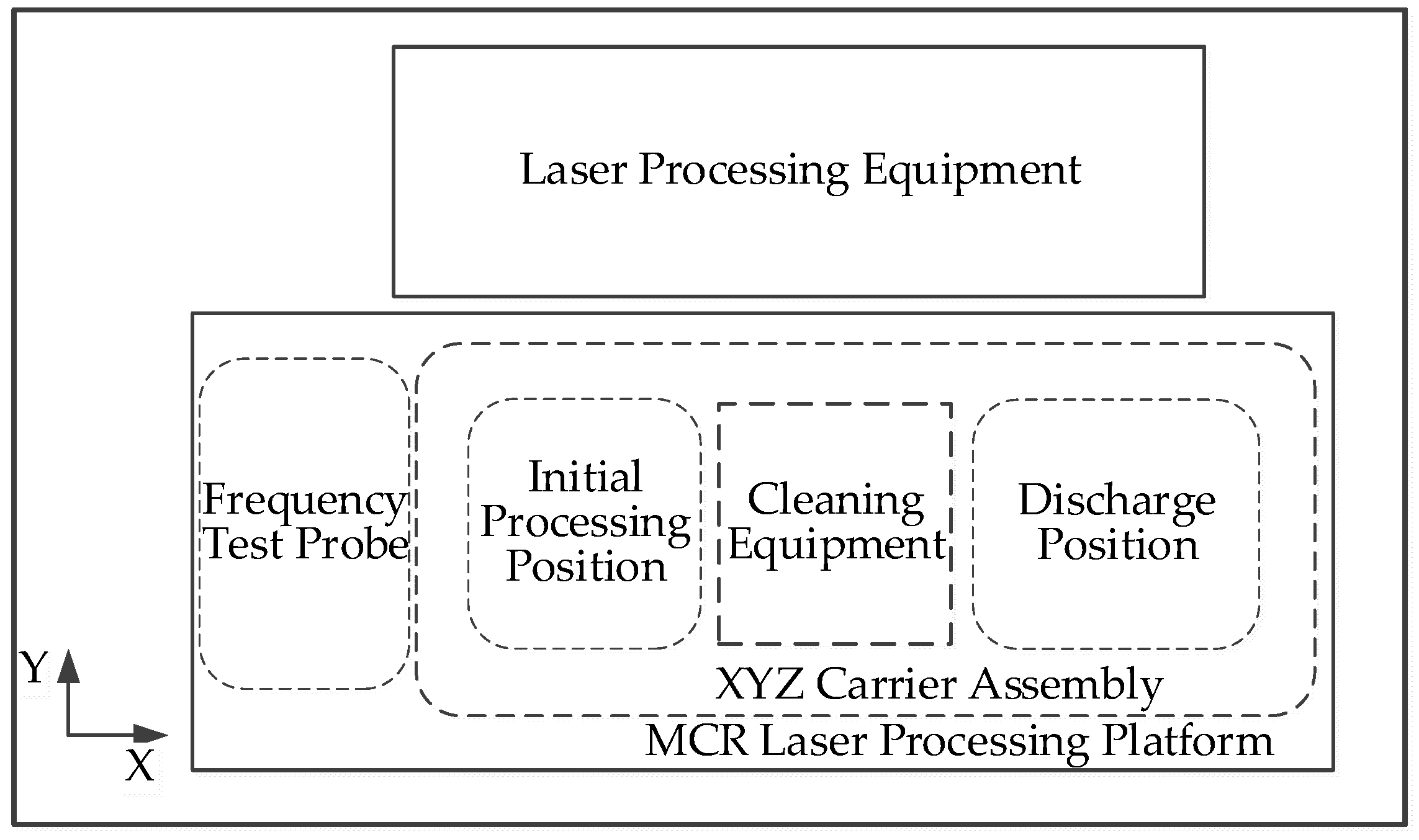
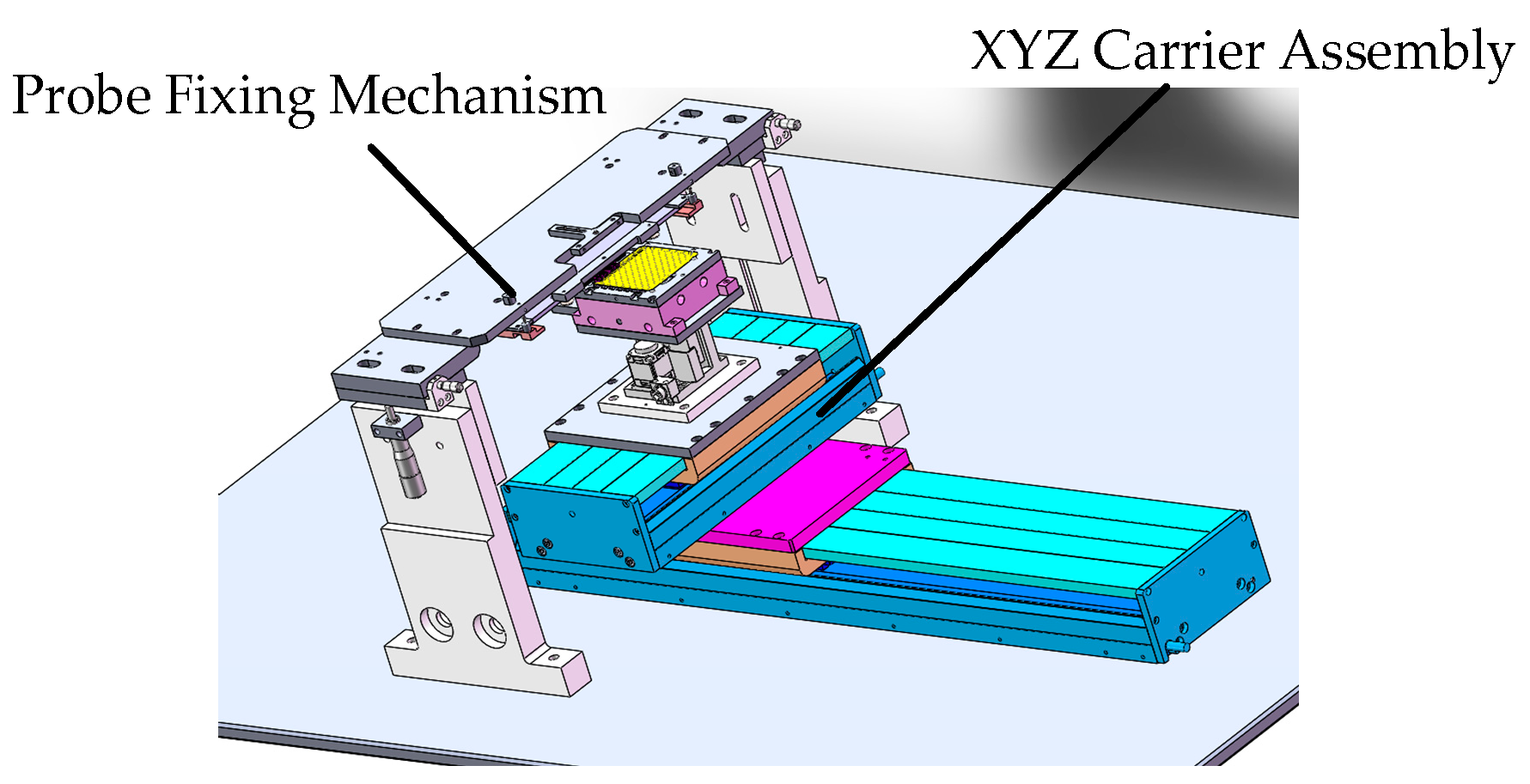
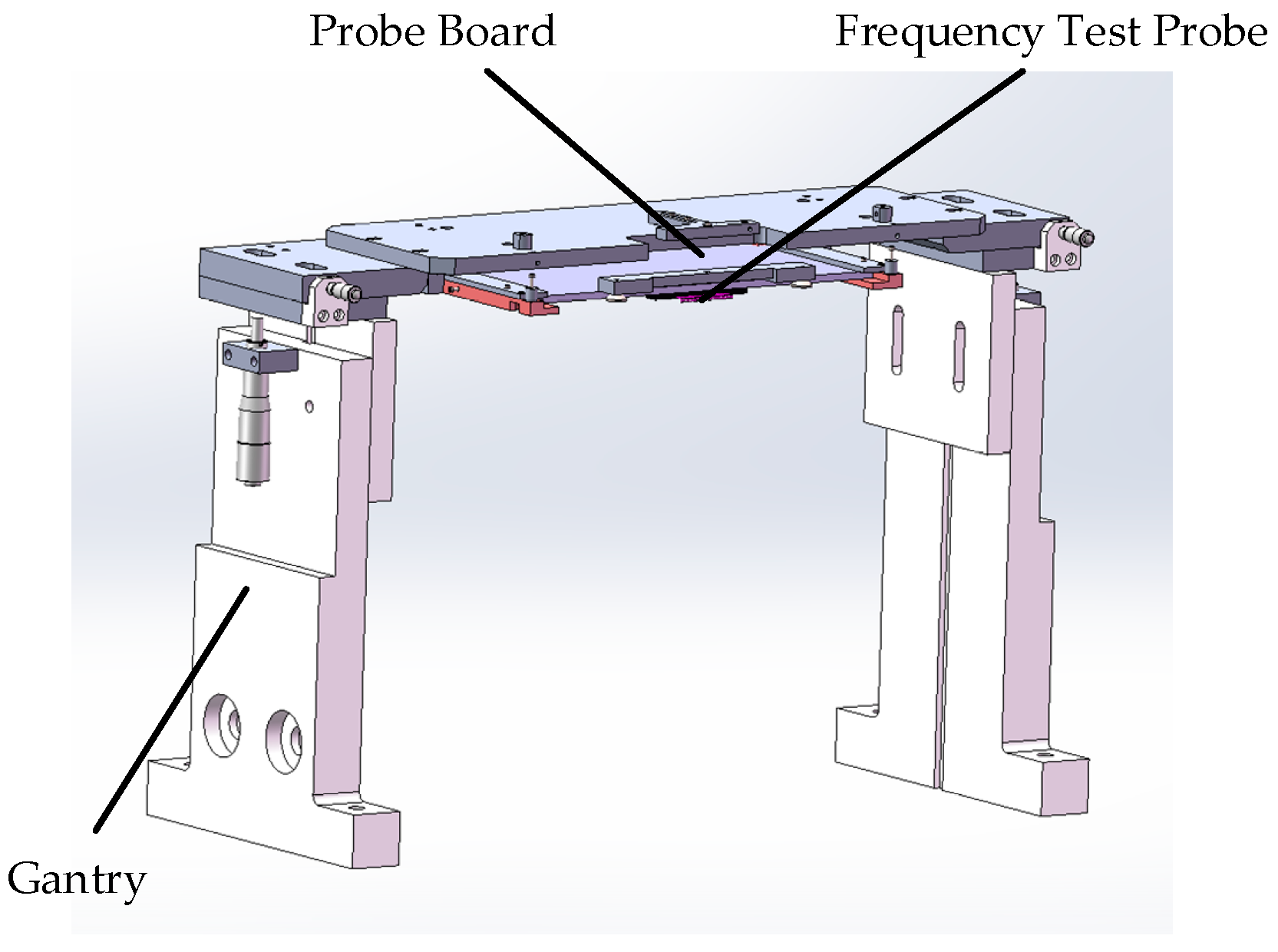

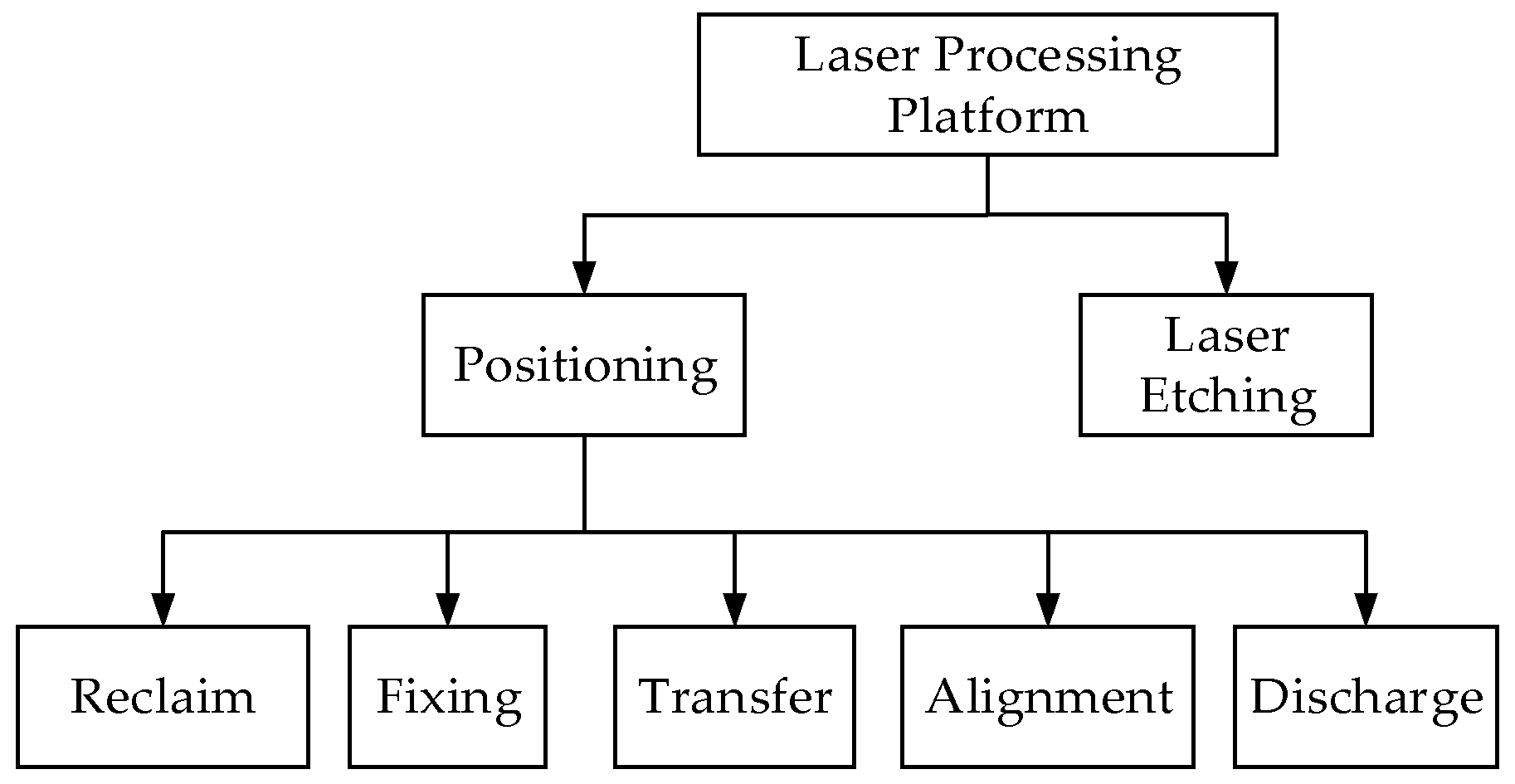

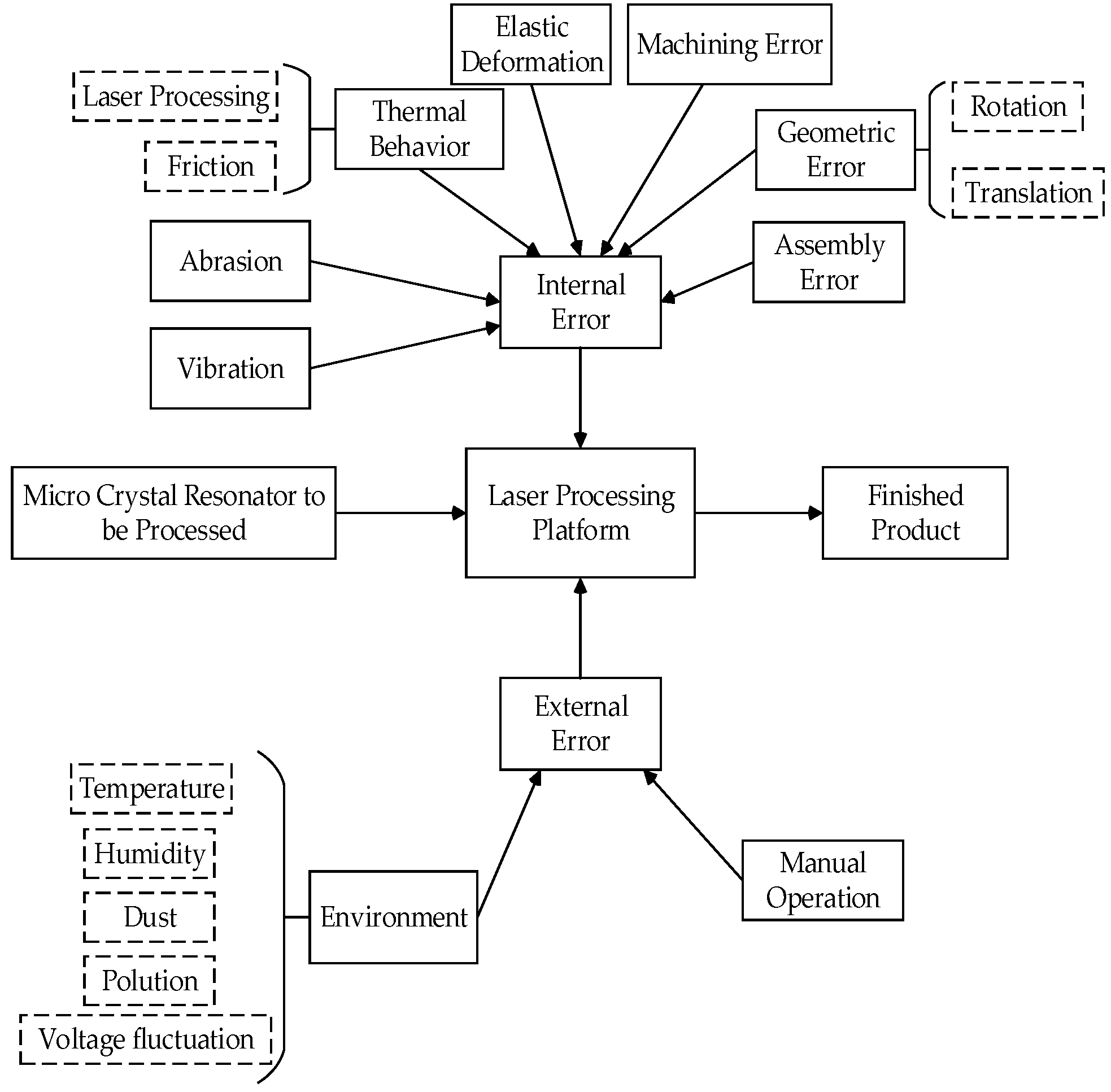
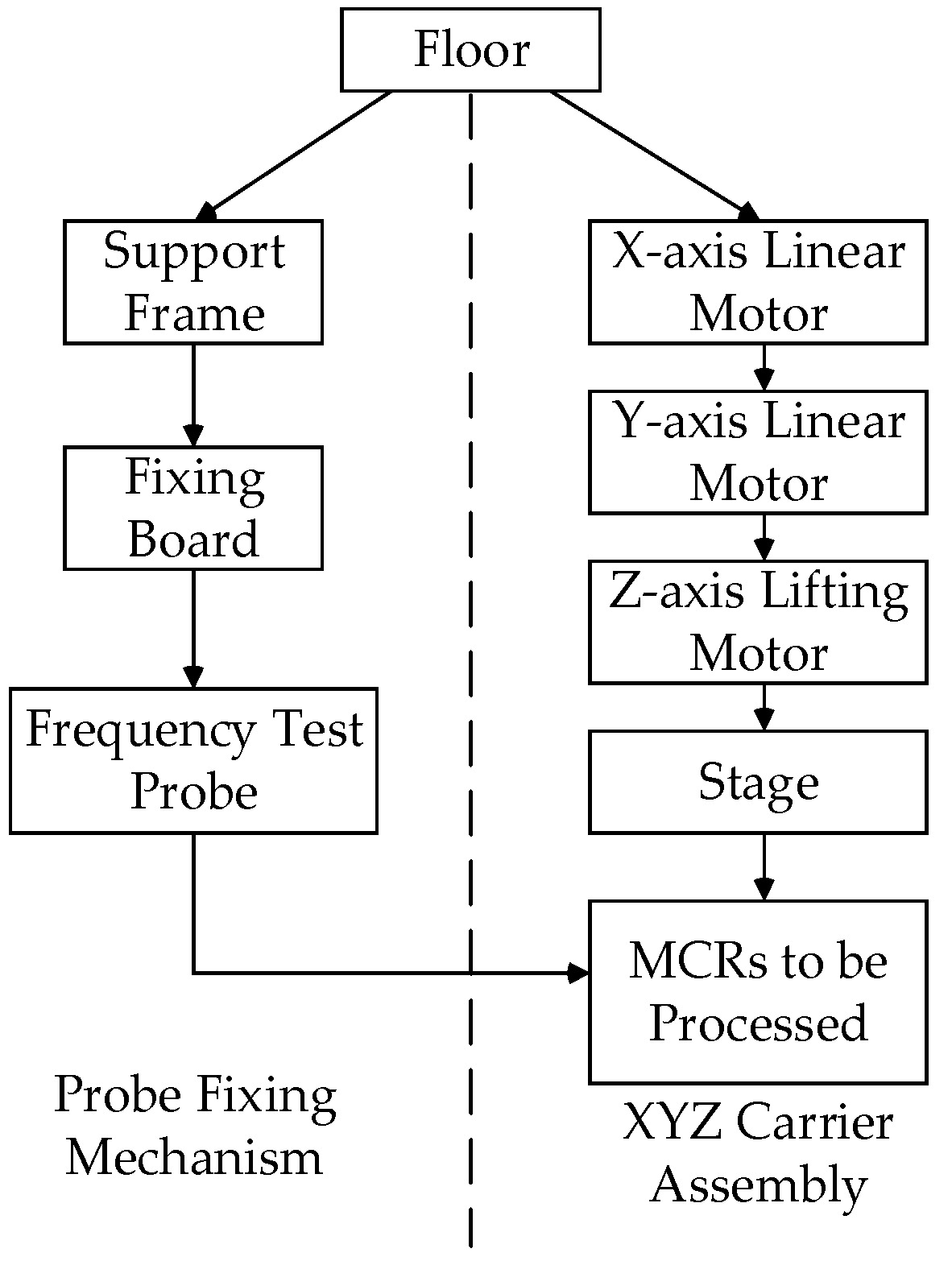
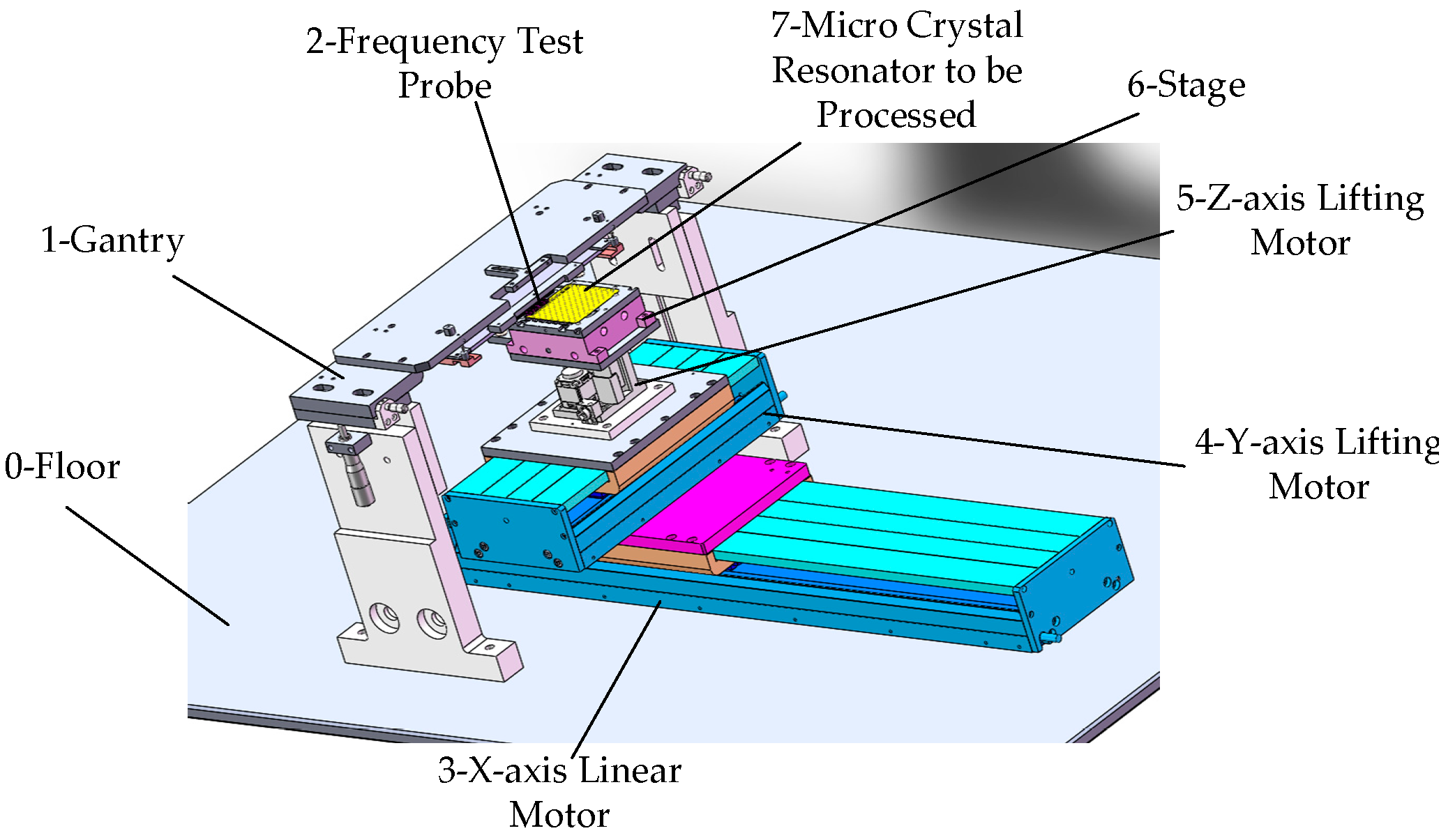

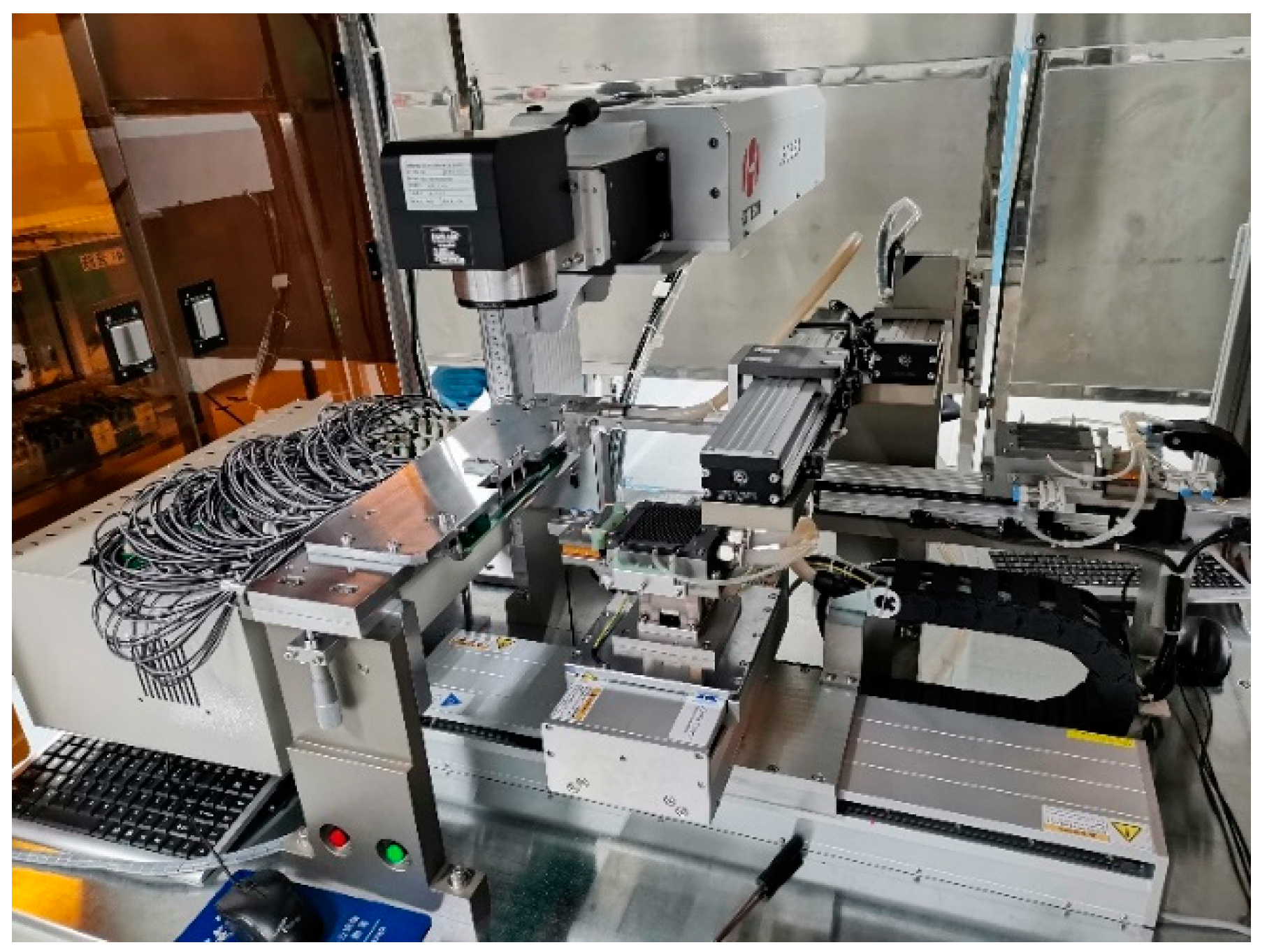
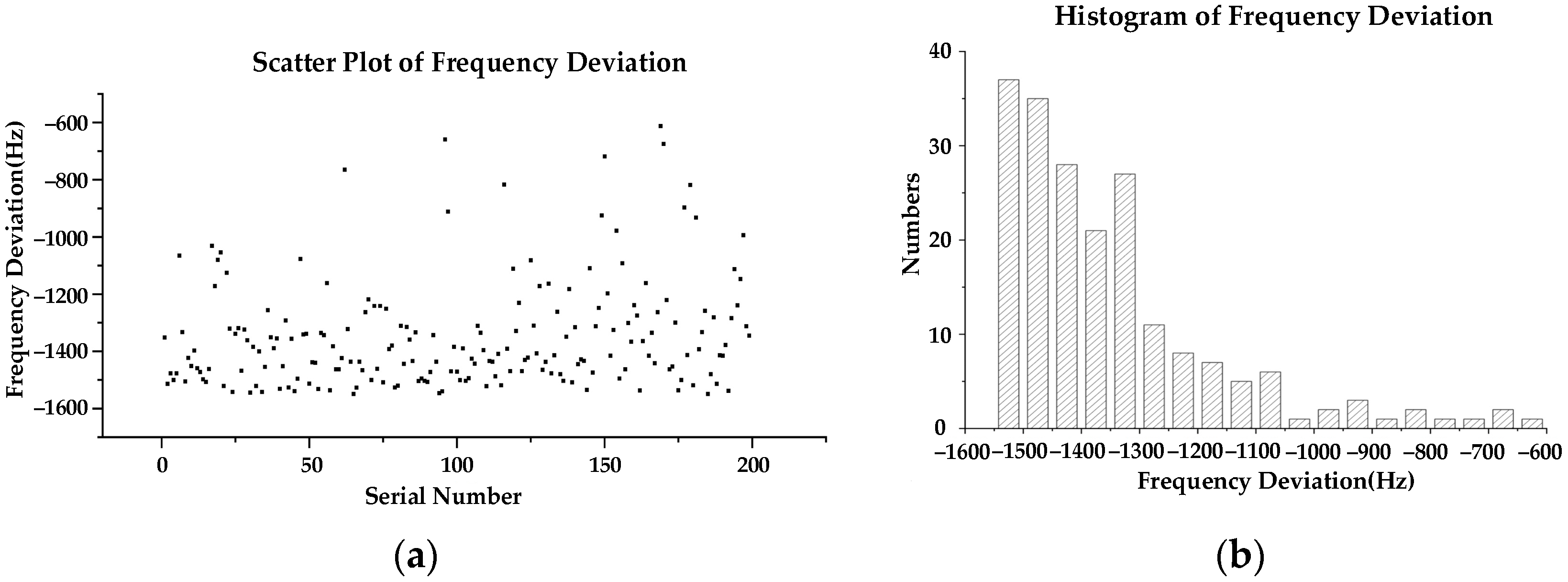
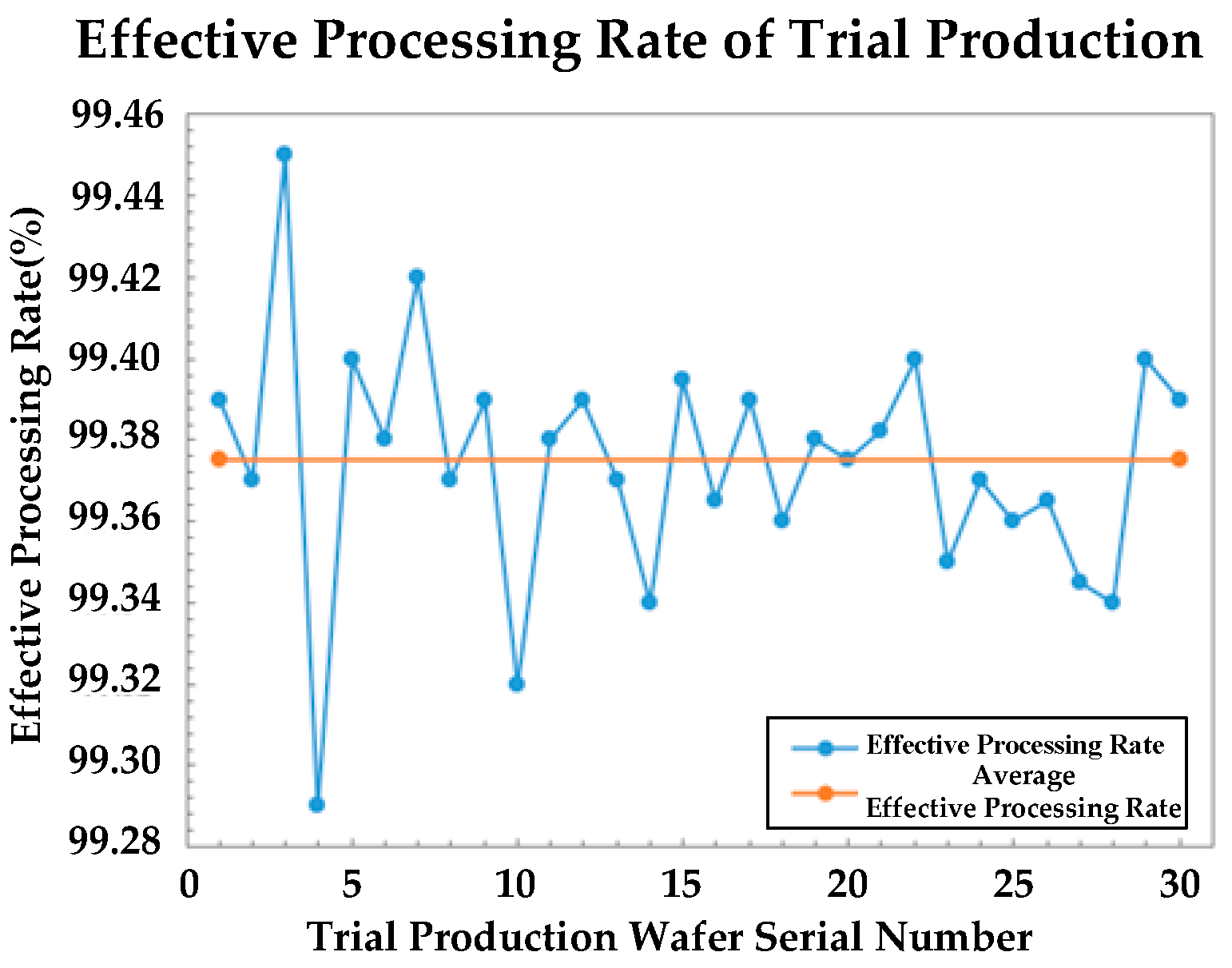
| 1 | 2 | 3 | 4 | 5 | 6 | 7 | |
|---|---|---|---|---|---|---|---|
| 1 | 2 | 3 | 4 | 5 | 6 | 7 | |
| 0 | 1 | 0 | 3 | 4 | 5 | 6 | |
| 0 | 0 | 0 | 0 | 3 | 4 | 5 | |
| 0 | 0 | 0 | 0 | 0 | 3 | 4 | |
| 0 | 0 | 0 | 0 | 0 | 0 | 3 | |
| 0 | 0 | 0 | 0 | 0 | 0 | 0 | |
| 0 | 0 | 0 | 0 | 0 | 0 | 0 | |
| 0 | 0 | 0 | 0 | 0 | 0 | 0 |
| Positioning Error of Probe End | Mean Value (μm) | Standard Deviation (μm) |
|---|---|---|
| Ex | −0.0243 | 20.3 |
| Ey | −0.0211 | 26.8 |
| Ez | −0.0116 | 12.1 |
| Direction | Positioning Error of Laser Processing Platform for MCR Frequency Modulation (μm) | ||||
|---|---|---|---|---|---|
| X | 3.086 | 2.845 | 2.786 | 2.945 | 3.102 |
| 2.675 | 3.112 | 3.026 | 2.915 | 3.056 | |
| Y | 5.687 | 5.845 | 5.898 | 5.769 | 5.895 |
| 5.865 | 5.756 | 5.954 | 5.675 | 5.812 | |
Publisher’s Note: MDPI stays neutral with regard to jurisdictional claims in published maps and institutional affiliations. |
© 2022 by the authors. Licensee MDPI, Basel, Switzerland. This article is an open access article distributed under the terms and conditions of the Creative Commons Attribution (CC BY) license (https://creativecommons.org/licenses/by/4.0/).
Share and Cite
Hu, J.; Li, Z.; Wu, Y.; Yu, X.; Li, G. Error Model and Frequency Modulation Characteristics Analysis of Laser Processing Platform for Micro Crystal Resonator. Appl. Sci. 2022, 12, 1340. https://doi.org/10.3390/app12031340
Hu J, Li Z, Wu Y, Yu X, Li G. Error Model and Frequency Modulation Characteristics Analysis of Laser Processing Platform for Micro Crystal Resonator. Applied Sciences. 2022; 12(3):1340. https://doi.org/10.3390/app12031340
Chicago/Turabian StyleHu, Jian, Zhihang Li, Yanlin Wu, Xindong Yu, and Gangyan Li. 2022. "Error Model and Frequency Modulation Characteristics Analysis of Laser Processing Platform for Micro Crystal Resonator" Applied Sciences 12, no. 3: 1340. https://doi.org/10.3390/app12031340
APA StyleHu, J., Li, Z., Wu, Y., Yu, X., & Li, G. (2022). Error Model and Frequency Modulation Characteristics Analysis of Laser Processing Platform for Micro Crystal Resonator. Applied Sciences, 12(3), 1340. https://doi.org/10.3390/app12031340







